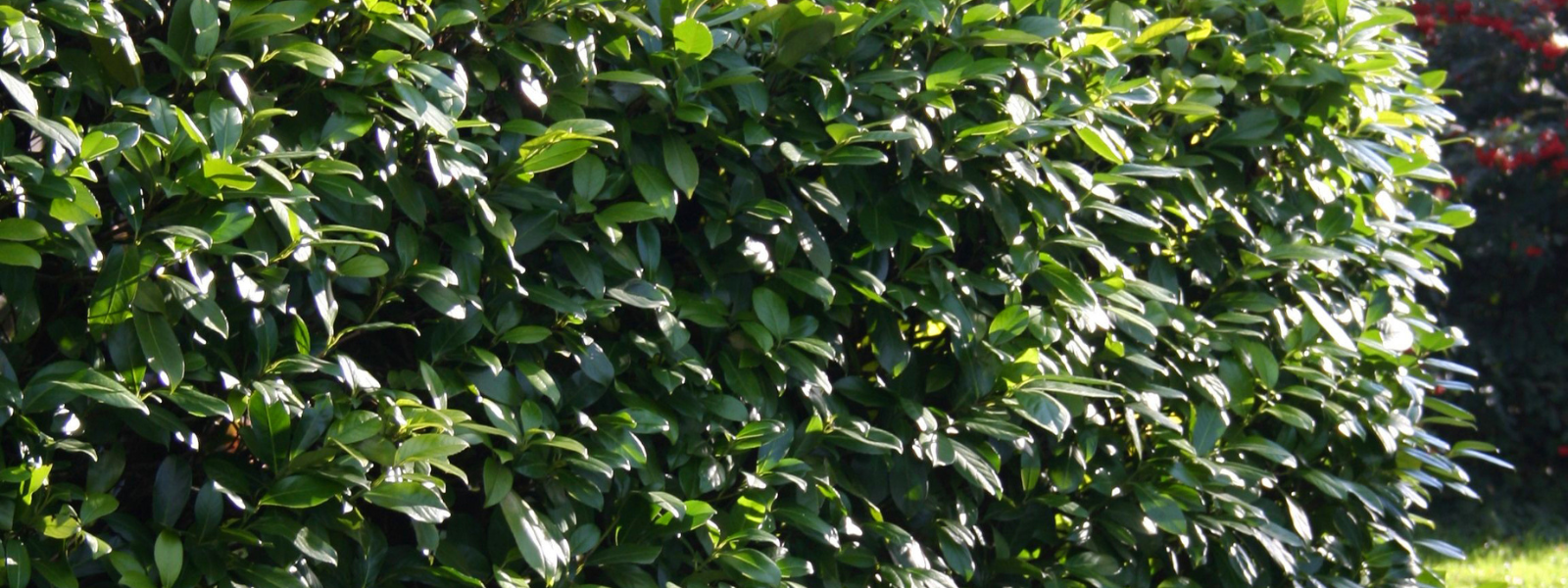
The Ultimate Cherry Laurel Hedging Guide
Cherry Laurel ( Prunus laurocerasus) stands out as a popular choice for hedging in the UK, and for good reason. Its vigorous growth, dense evergreen foliage, and relatively low maintenance requirements make it an excellent option for creating privacy screens, windbreaks, and formal garden boundaries.
Why Choose Cherry Laurel?
Rapid Growth: Cherry Laurel establishes quickly, providing relatively fast coverage compared to some other hedging species. This is ideal for gardeners looking for quicker results.
Dense Evergreen Foliage: Its large, glossy, dark green leaves create a lush and continuous screen year-round, offering excellent privacy and noise reduction.
Adaptability: Cherry Laurel is generally tolerant of a range of soil types and light conditions, from full sun to partial shade. It can also handle some exposure to wind.
Low Maintenance (Generally): Once established, Cherry Laurel is relatively easy to care for, requiring pruning only once or twice a year to maintain its shape and size.
Wildlife Value: While primarily grown for its structure and foliage, Cherry Laurel flowers in spring with small, fragrant white blooms that attract pollinators. These are followed by red berries that mature to black, providing a food source for birds (though the leaves and berries are toxic to humans and pets if ingested).
Planting Your Cherry Laurel Hedge:
Timing: The best time to plant Cherry Laurel hedging is during the autumn or spring when the soil is moist and the ground is not frozen or waterlogged. Container-grown plants can generally be planted at any time of year, provided the ground conditions are suitable.
Spacing: The recommended spacing between Cherry Laurel plants depends on the size of the plants you are planting and your desired speed of establishment. Typically, for smaller plants (e.g., 60-90cm), a spacing of 60-90cm (2-3 feet) is recommended. For larger plants, you may increase the spacing slightly. For a very dense hedge, you can plant in a staggered double row.
Preparation: Dig a trench that is twice the width and the same depth as the root ball of your plants. Incorporate some well-rotted organic matter into the soil to improve drainage and fertility.
Planting: Remove the plants from their pots and gently loosen any circling roots. Place the plants in the trench at the recommended spacing, ensuring the top of the root ball is level with the surrounding soil. Backfill the trench with the prepared soil, firming it gently around the base of the plants.
Watering: Water the newly planted hedge thoroughly. Continue to water regularly, especially during dry periods, until the plants are well established.
Mulching: Apply a layer of mulch around the base of the hedge to help retain moisture, suppress weeds, and regulate soil temperature. Keep the mulch away from the stems of the plants.
Caring for Your Cherry Laurel Hedge:
Watering: Once established, Cherry Laurel is relatively drought-tolerant, but it will benefit from watering during prolonged dry spells, especially in its first few years.
Feeding: A general-purpose fertiliser can be applied in spring to encourage healthy growth. Follow the manufacturer's instructions.
Pruning: Cherry Laurel responds well to pruning. The best time to prune is in late spring or summer after the new growth has flushed. Avoid pruning in late autumn or winter.
Lightly trim the sides and top to encourage bushier growth.Maintenance Pruning: Trim once or twice a year to maintain the desired height and shape. You can use hand shears or a hedge trimmer for larger hedges. Be sure to keep the base slightly wider than the top to allow sunlight to reach all parts of the hedge.
Pests and Diseases: While generally robust, Cherry Laurel can occasionally be affected by pests such as scale insects or diseases like powdery mildew or leaf spot. Monitor your hedge regularly and take appropriate action if any issues arise. Good airflow and proper pruning can help prevent many problems.
Things to Consider:
Toxicity: Remember that all parts of the Cherry Laurel plant, except for the fleshy part of the ripe berries, are poisonous if ingested. Exercise caution, especially if you have children or pets.
Vigorous Growth: While its rapid growth is a benefit, it also means that regular pruning is necessary to keep it within bounds.
Berry Production: If you prefer a hedge without berries, you can prune more frequently after flowering to remove them.
By following these guidelines, you can successfully establish and maintain a beautiful and functional Cherry Laurel hedge for years to come.
Still have more questions? Contact us and our team of experts will be there to help you through your hedging journey!
